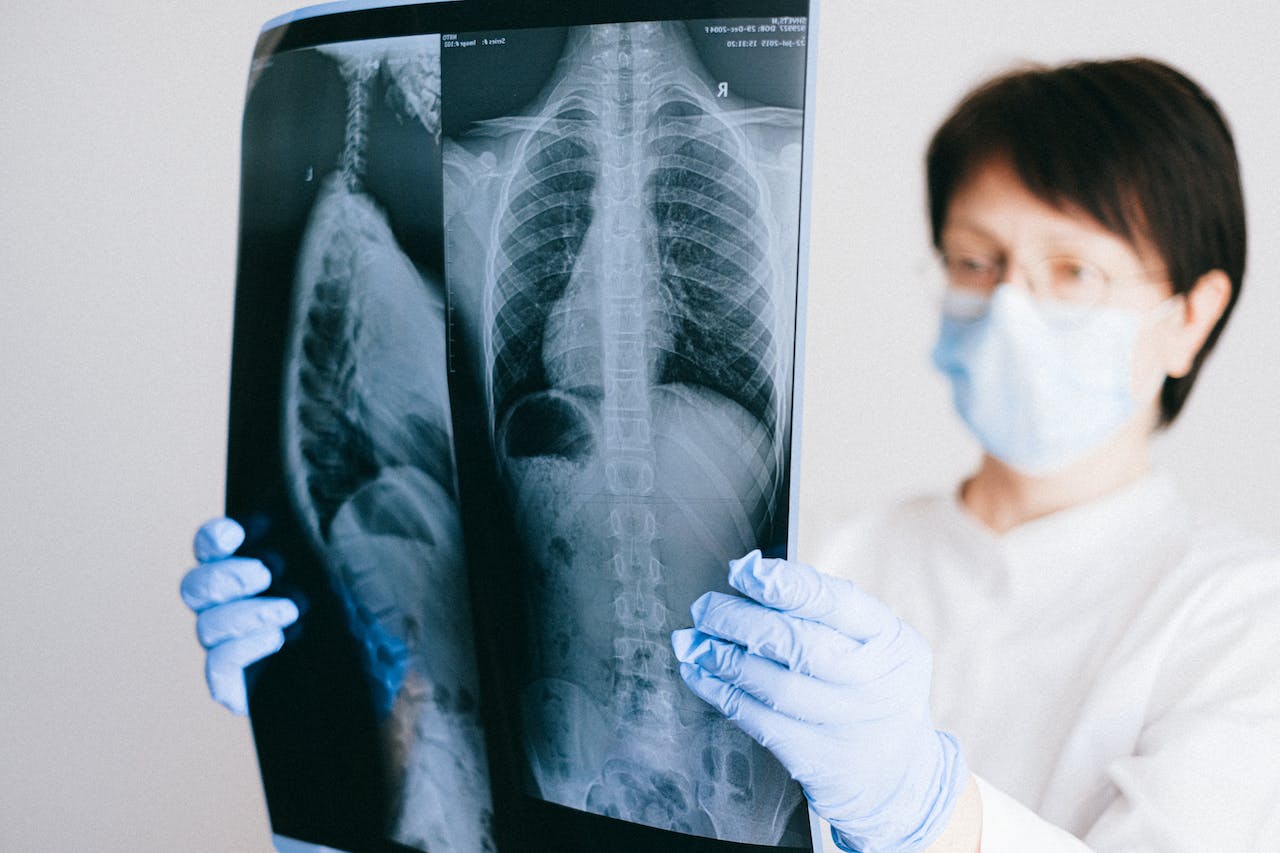
Ear syringing is a method that is sometimes used to remedy an earwax blockage or remove excess earwax that has built up and cannot be removed through traditional cleaning practices. It involves water being squirted at high pressure into the ear canal through a syringe to clear the plug of earwax.
Since earwax can cause hearing problems and other issues, GP surgeries used to provide ear syringing as a way to remove the build-up. Although it was once a common practice for GP surgeries, this service has now been stopped due to safety concerns about potentially damaging the ear canal or leading to infections.
Since most GP surgeries are no longer providing this service, patients have had to find alternative solutions if they are suffering from bothersome earwax build-up. In these cases, they may be advised by their doctor on how to safely remove wax at home by using ear drops or other methods. On occasion, they may also be referred to audiology clinics that are set up and experienced in providing fast and safe ear syringing services.
With that said, if you are undergoing ear syringing, it’s important you know what to expect before, during, and after the procedure. In this article, we’ll be discussing everything you need to know about getting your ears syringed.
Reasons To Have Your Ears Syringed
Earwax may accumulate in the ear canal for various reasons; it could be due to a slow natural flow of earwax, the use of products to remove the wax, or the use of a hearing aid.
A buildup of earwax can cause symptoms such as hearing loss, vertigo, and ringing in the ears. Ear syringing is one of many methods of removing built up ear wax within the ears. Although, as already mentioned, the safety of ear syringing has been called into question by the NHS.
I Want My Ears Syringed – Is It Available on the NHS?
Ear syringing is no longer recommended as a first-line treatment for earwax removal in the UK. Depending on your local health authority, it may or may not be available. For the most accurate and up-to-date advice on what is available on the NHS in your area, you should speak to your GP surgery.
The National Institute for Health and Care Excellence (NICE) has warned against the practice, stating that it is unsafe and ineffective. As an alternative, NICE suggests using an electronic irrigator in order to remove built-up ear wax. This method utilises a machine which pumps water into the ears at a controlled pressure, meaning it is far safer. NICE hopes to see this service used increasingly in GP surgeries or community clinics as opposed to referrals to specialist clinics.
NICE’s guidance will help protect both healthcare providers and their patients against any potential risks associated with ear syringing that may arise from improper use, allowing people access to the safest possible solutions for their hearing health.
What other methods are there for removing wax?
1. Self-Care Using Ear Drops:
The first line of action against ear wax build-up often involves over-the-counter ear drops that help soften the wax. These drops can be oil-based (like olive or almond oil) or water-based (like sodium bicarbonate 5% ear drops). You can purchase affordable olive oil drops here.
The softened wax either falls out on its own or is washed out naturally by the ear. While this method is safe for most people, individuals with a perforated eardrum or otitis externa (inflammation of the ear canal) should avoid using ear drops.
2. Ear Microsuction:
Ear microsuction is a lesser-known but highly effective method of ear wax removal. It involves using a small device under a microscope to suck out the wax. It’s generally safe and can be performed even if you have an ear drum perforation, ear infection, or have had ear surgery. However, this method might require a referral to a specialist and may not be available in all areas.
3. Manual Removal:
Manual removal is another option for those who cannot undergo ear irrigation or microsuction. This procedure is typically performed by an ENT specialist and involves using instruments like a cerumen hook or Jobson Horne probe to remove the ear wax manually.
Where Can I Get My Ears Syringed?
Because GP surgeries no longer offer ear syringing, you will have to seek out alternatives. Your doctor may be able to recommend a local audiology clinic or community clinic that can provide ear syringing services. There are also many private medical clinics that offer ear syringing services.
It is important to make sure that the clinic you choose is reputable and has experienced technicians who will be able to safely and effectively remove any built-up ear wax.

I’m Getting My Ears Syringed – How Should I Prepare For My Appointment?
If you are having your ears syringed, at a private or specialist clinic, you should ensure that you have been using olive oil ear drops for at least two weeks prior to the day of your appointment. These drops act as wax softeners and ensure the best possible results.
It’s essential to let whoever is doing the procedure know if you are taking any medication, have had any injuries to your ears, or have pre-existing hearing conditions. During the appointment, ensure that you are sitting comfortably with a protective bib in place to protect your clothes. You should let your doctor know if you feel any discomfort or pain during the procedure.
Benefits and Possible Complications of Getting Your Ears Syringed
As we’ve already touched on in this article, ear syringing can be an effective method for removing excess earwax from the ear canal, but there are risks associated with it that have led the NHS to opt for alternative methods of clearing wax. That being said, the benefits of ear syringing include:
- Quick and efficient removal of built-up wax.
- Alleviation of symptoms such as hearing loss, tinnitus, and vertigo, thereby improving the patient’s quality of life.
However, potential complications, albeit rare, may occur. These include:
- Temporary hearing loss: This could occur immediately after the procedure due to residual water or wax in the ear, but usually resolves on its own.
- Ear infections: There’s a slight risk of developing an infection post-procedure. If you notice signs of an infection like pain, discharge, or fever, seek medical attention promptly.
- Perforated eardrum: Although extremely rare, there’s a small chance that the pressure from the procedure could lead to perforated ear drums.
It’s important to note that ear syringing may not be suitable for everyone, particularly individuals with pre-existing ear conditions or those who have had ear surgery in the past. Always consult with a healthcare provider to discuss these benefits and risks to determine the safest method of removing excessive earwax before deciding on the best course of treatment.
Ear Syringing; What Comes Out During the Process?
During ear syringing, a syringe filled with warm water is gently inserted into the ear canal. The water will then be squirted into the canal to loosen and remove the built-up wax. Both the water and the wax will flow out together. The wax itself may look like small lumps which are light yellow in colour, or it may be a dark brown or even black. All of this is normal.
The process can be a little unpleasant as it involves wax and water coming out of your ear, but the sensation should not be painful. After the procedure, your doctor will advise you to keep your ear dry for 24 hours to prevent any further irritation or complications.

Ear Care: What Not to Do and When to Seek Help
When it comes to ear care, it’s important to remember that some common practices can do more harm than good. For instance, you should avoid removing earwax or cleaning your ears by inserting small objects, such as cotton wool buds, into the ear canal. This could lead to several complications, including:
- Damaging the ear canal and eardrum: The delicate structures of the ear are easily damaged, and using small objects can cause abrasions or even perforations.
- Causing the wax to become impacted: Instead of removing earwax, you might unintentionally push it further into the canal, leading to impaction.
- Perforating the tympanic membrane: The tympanic membrane, or eardrum, is a thin tissue that can be easily ruptured by improper ear cleaning methods.
Additionally, it’s worth noting that the use of ear candles has no benefit in managing earwax removal. In fact, it may result in serious injury, such as burns or ear canal blockages.
Who Should Be Referred to ENT?
Based on the information from the National Institute for Health and Care Excellence (NICE), certain individuals should be referred to an ear, nose, and throat (ENT) service for earwax removal. These include:
- Individuals who have a perforated eardrum or a history of ear surgery.
- Those who have had complications from previous earwax removal attempts, such as pain, severe vertigo, or a perforated eardrum.
- People in whom irrigation is contraindicated but who have not benefited from, or are unsuitable for, ear drops.
- Patients with only one hearing ear that is occluded with wax.
- People who have had multiple failed attempts at having their ears syringed or having microsuction.
Conclusion
It’s crucial to monitor your ear health and seek medical attention if you notice any concerning symptoms. Return to your healthcare provider if you develop a fever, experience ear pain, have significant itching in your ear, notice discharge from the ear (otorrhoea), or observe swelling of the external auditory meatus. These symptoms may indicate an infection and require prompt treatment.
Always remember, when it comes to ear care, prevention is better than cure, and safe practices are key to maintaining your ear health. Further information can be found on the NHS website.
Please note: This blog post may contain sponsored links, from which we may earn a small commission to support our work at no extra cost to you.


